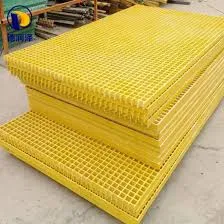
-
 Afrikaans
Afrikaans -
 Albanian
Albanian -
 Amharic
Amharic -
 Arabic
Arabic -
 Armenian
Armenian -
 Azerbaijani
Azerbaijani -
 Basque
Basque -
 Belarusian
Belarusian -
 Bengali
Bengali -
 Bosnian
Bosnian -
 Bulgarian
Bulgarian -
 Catalan
Catalan -
 Cebuano
Cebuano -
 China
China -
 China (Taiwan)
China (Taiwan) -
 Corsican
Corsican -
 Croatian
Croatian -
 Czech
Czech -
 Danish
Danish -
 Dutch
Dutch -
 English
English -
 Esperanto
Esperanto -
 Estonian
Estonian -
 Finnish
Finnish -
 French
French -
 Frisian
Frisian -
 Galician
Galician -
 Georgian
Georgian -
 German
German -
 Greek
Greek -
 Gujarati
Gujarati -
 Haitian Creole
Haitian Creole -
 hausa
hausa -
 hawaiian
hawaiian -
 Hebrew
Hebrew -
 Hindi
Hindi -
 Miao
Miao -
 Hungarian
Hungarian -
 Icelandic
Icelandic -
 igbo
igbo -
 Indonesian
Indonesian -
 irish
irish -
 Italian
Italian -
 Japanese
Japanese -
 Javanese
Javanese -
 Kannada
Kannada -
 kazakh
kazakh -
 Khmer
Khmer -
 Rwandese
Rwandese -
 Korean
Korean -
 Kurdish
Kurdish -
 Kyrgyz
Kyrgyz -
 Lao
Lao -
 Latin
Latin -
 Latvian
Latvian -
 Lithuanian
Lithuanian -
 Luxembourgish
Luxembourgish -
 Macedonian
Macedonian -
 Malgashi
Malgashi -
 Malay
Malay -
 Malayalam
Malayalam -
 Maltese
Maltese -
 Maori
Maori -
 Marathi
Marathi -
 Mongolian
Mongolian -
 Myanmar
Myanmar -
 Nepali
Nepali -
 Norwegian
Norwegian -
 Norwegian
Norwegian -
 Occitan
Occitan -
 Pashto
Pashto -
 Persian
Persian -
 Polish
Polish -
 Portuguese
Portuguese -
 Punjabi
Punjabi -
 Romanian
Romanian -
 Russian
Russian -
 Samoan
Samoan -
 Scottish Gaelic
Scottish Gaelic -
 Serbian
Serbian -
 Sesotho
Sesotho -
 Shona
Shona -
 Sindhi
Sindhi -
 Sinhala
Sinhala -
 Slovak
Slovak -
 Slovenian
Slovenian -
 Somali
Somali -
 Spanish
Spanish -
 Sundanese
Sundanese -
 Swahili
Swahili -
 Swedish
Swedish -
 Tagalog
Tagalog -
 Tajik
Tajik -
 Tamil
Tamil -
 Tatar
Tatar -
 Telugu
Telugu -
 Thai
Thai -
 Turkish
Turkish -
 Turkmen
Turkmen -
 Ukrainian
Ukrainian -
 Urdu
Urdu -
 Uighur
Uighur -
 Uzbek
Uzbek -
 Vietnamese
Vietnamese -
 Welsh
Welsh -
 Bantu
Bantu -
 Yiddish
Yiddish -
 Yoruba
Yoruba -
 Zulu
Zulu
frp desalination pipes and fittings for efficient water treatment ...
Efficient Water Treatment The Role of FRP Desalination Pipes and Fittings
As the world faces increasing challenges related to water scarcity and quality, innovative technologies and materials are essential for sustainable water treatment solutions. Among these, Fiber-Reinforced Polymer (FRP) desalination pipes and fittings have emerged as a crucial component for enhancing the efficiency and effectiveness of water treatment processes. This article explores the significance of FRP materials in desalination systems, focusing on their properties, advantages, and applications.
Understanding FRP and Its Properties
FRP is a composite material made from a polymer resin reinforced with fibers, typically glass or carbon. This combination provides a lightweight, strong, and corrosion-resistant solution suitable for various industrial applications. The intrinsic properties of FRP, such as high tensile strength, resistance to chemical corrosion, and low thermal conductivity, make it particularly suitable for desalination applications where harsh conditions are prevalent.
FRP pipes and fittings are designed to withstand the high pressures associated with seawater desalination. Unlike traditional materials like steel or concrete, which may corrode or degrade over time due to exposure to saltwater and chemicals used in the treatment process, FRP materials demonstrate superior durability. This longevity not only reduces the need for frequent replacements but also minimizes maintenance costs, making FRP a cost-effective choice for long-term water treatment solutions.
Advantages of FRP in Desalination
1. Corrosion Resistance One of the most significant advantages of FRP is its resistance to corrosion. In a desalination plant, the pipes are frequently exposed to saltwater, which can rapidly deteriorate conventional materials. FRP eliminates this concern, ensuring a longer lifespan and reduced downtime for repairs.
2. Lightweight and Easy to Handle FRP pipes are considerably lighter than metal alternatives, making them easier to transport, install, and manage. This characteristic can lead to lower overall installation costs and enhanced labor efficiency.
3. Design Flexibility FRP materials can be molded into various shapes and sizes, enabling customized solutions for different systems and processes within desalination facilities. This flexibility allows engineers to design systems that optimize water flow and reduce energy consumption.
frp desalination pipes and fittings for efficient water treatment ...

5. Reduced Environmental Impact The long service life and recyclability of FRP materials contribute to a lower environmental footprint. With increasing pressure on industries to adopt sustainable practices, using FRP in desalination represents a forward-thinking approach to resource management.
Applications in Desalination Systems
FRP desalination pipes and fittings are used in various components of desalination plants, including
1. Pre-treatment Systems These systems filter and treat the incoming seawater before it enters the desalination plant. FRP pipes are ideal for transporting untreated water due to their resistance to corrosion.
2. Reverse Osmosis Units In reverse osmosis systems, FRP piping is used to handle high-pressure water, where performance and reliability are critical. The flexibility and strength of FRP ensure a secure and efficient flow.
3. Post-treatment and Distribution After desalination, the treated water needs to be transported to storage and distribution networks. Utilizing FRP pipes for this purpose enhances the longevity and integrity of the system.
4. Brine Management The disposal of brine, a byproduct of desalination, poses environmental challenges. FRP pipes offer an effective solution for transporting brine to disposal sites or integrating it into other processing systems.
Conclusion
In an era where water scarcity is becoming increasingly critical, the integration of advanced materials such as FRP in desalination plants is a strategic necessity. The corrosion resistance, lightweight nature, design flexibility, and overall cost-effectiveness of FRP pipes and fittings position them as vital components in modern water treatment solutions. As technology continues to evolve, embracing innovative materials like FRP will be instrumental in achieving efficient and sustainable water management practices worldwide. By investing in these advanced solutions, we can pave the way for a future where clean and accessible water is a universal right rather than a luxury.









